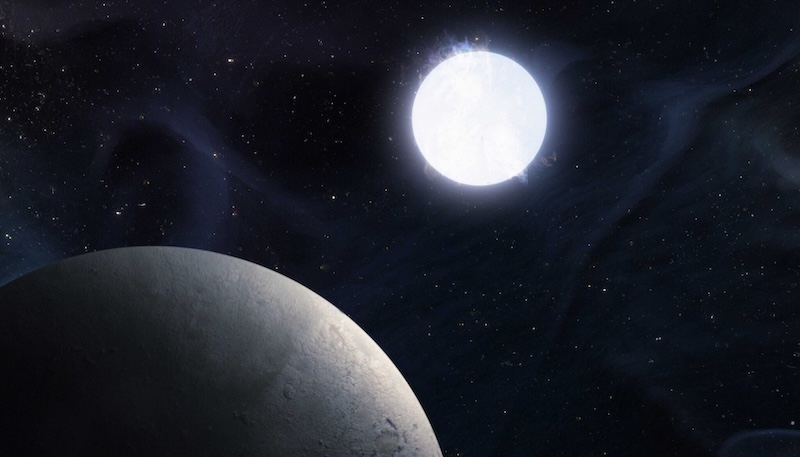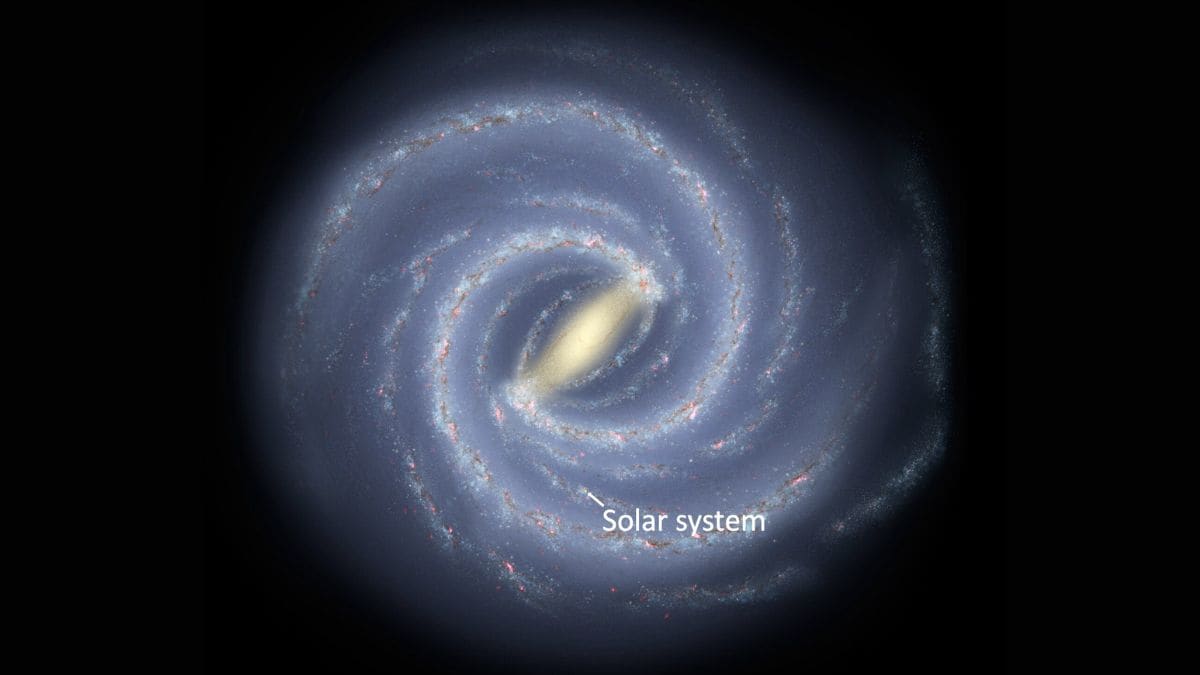Speedy white dwarf planets are more likely to be habitable


- White dwarfs are the hot, dense remaining cores of long-dead stars. Astronomers have thought that any planets orbiting them would be uninhabitable, even in the habitable zone.
- But surprisingly, some white dwarf planets might be able to support life after all. A new study compares possible planets around white dwarfs with similar planets around sun-like stars.
- ‘Speedy’ planets orbiting faster in smaller orbits around white dwarfs are warmer than expected and more likely to maintain habitable conditions than the planets around the sun-like stars.
Planets appear to be common around stars in our home galaxy, the Milky Way. Astronomers have found planets not just for stars like our sun, but also for smaller, cooler red dwarfs and other types of stars. They’ve even been finding planets orbiting white dwarfs, the hot, dense, presumably dead cores of once-active stars. And now, scientists say there could be more white dwarf planets than previously thought, and that some are potentially habitable.
Astronomers at UC Irvine said on February 13, 2025, that white dwarfs could indeed host habitable planets. And they said the speed in orbit of these worlds makes a big difference for habitability.
Let’s go back. What does habitability mean for astronomers? It doesn’t mean we humans could go there and live. And it doesn’t mean that alien civilizations might already live there. Instead, to astronomers, the word habitable suggests a planet whose physical conditions might allow life – any form of life, perhaps microbial life – to exist. Read more about the word habitability as it applies to exoplanets.
Lead author Aomawa Shields and her team published their peer-reviewed findings in The Astrophysical Journal on January 16, 2025.
The 2025 EarthSky lunar calendar makes a great gift. Get yours today!
Comparing climates on planets of 2 different stars
To find out more about the potential for white dwarfs to have habitable planets, the researchers did a comparison of two different stars. One was a hypothetical white dwarf and the other was Kepler-62, a star similar to our sun. They used a a 3D global climate computer model, a sophisticated simulacrum of real worlds primarily used to study Earth’s climate. The model compared possible planets in each star’s habitable zone, a zone where temperatures are such that liquid water could exist.
White dwarfs no longer have active fusion occurring inside them. Fusion is the process by which stars shine. So scientists had thought white dwarfs wouldn’t provide enough heat for life on their orbiting planets. But the researchers found something surprising. The white dwarf exoplanet in the simulation turned out to be warmer – more potentially habitable – than the one around Kepler-62. Shields explained that:
… White dwarf stars might still give off some heat from residual nuclear activity in their outer layers …
A new study from UC Irvine astronomers reveals white dwarf stars may host more habitable #exoplanets than previously thought. This study opens new frontiers in our search for potentially life-supporting worlds beyond our solar system. https://buff.ly/4aXJ6LE
— UC Irvine School of Physical Sciences (@ps.uci.edu) 2025-02-13T17:35:40.774Z
White dwarf planets could be hospitable for life
The researchers also said that – in their model – a clue to habitability was how closely each planet orbited its star. In other words, the habitable zone is placed differently for each star. The habitable zone for the white dwarf is much closer to the star than the one for Kepler-62. So the planet in the white dwarf’s habitable zone is closer to its star. This nearness causes the white dwarf planet to move faster in orbit than the Kepler-62 planet, just as innermost Mercury, in our solar system, is our sun’s fastest planet.
But the white dwarf planet moves much faster than Mercury! Our sun’s innermost planet has 88 Earth-days in its year. The white dwarf planet completes an orbit around its star in only 10 hours. Meanwhile, the Kepler-62 planet takes 155 Earth-days to orbit its sunlike star (so its year is 155 Earth-days long).
In addition, both alien planets are tidally locked, meaning they always keep the same side facing their stars. In order for that to happen, the planets must rotate in the same number of days it takes them to orbit their stars once. For the white dwarf planet, this means it rotates once in just 10 Earth-hours.
You might see that being tidally locked – keeping a single face toward your star – exerts a profound effect on a planet’s weather (assuming the planet has an atmosphere and weather). And speed in orbit would be a big factor, too; for example, there’s greater cloud circulation on the speedy white dwarf planet than on the slower-moving Kepler-62 planet. But on the Kepler-62 planet, the water droplet clouds tended to accumulate on the permanent day side. As Shields said:
We expect synchronous rotation of an exoplanet in the habitable zone of a normal star like Kepler-62 to create more cloud cover on the planet’s dayside, reflecting incoming radiation away from the planet’s surface. That’s usually a good thing for planets orbiting close to the inner edge of their stars’ habitable zones, where they could stand to cool off a bit rather than lose their oceans to space in a runaway greenhouse.
But for a planet orbiting squarely in the middle of its habitable zone, it’s not such a good idea.

Too many clouds
Why is this combination of conditions – synchronous rotation with its star, and sitting in the middle of its habitable zone – a bad thing for the Kepler-62 planet? Basically, it cools the planet down too much. Shields explained:
The planet orbiting Kepler-62 has so much cloud cover that it cools off too much, sacrificing precious habitable surface area in the process. On the other hand, the planet orbiting the white dwarf is rotating so fast that it never has time to build up nearly as much cloud cover on its dayside, so it retains more heat, and that works in its favor.
But on the white dwarf planet, there are fewer clouds on the permanent dayside. There’s also a stronger greenhouse effect on the permanent nightside. This creates a warmer climate overall.
A new class of habitable worlds
The results show how some exoplanets – such as ones around white dwarfs, even if they are tidally locked – could be more potentially habitable than previously thought, and in surprising ways. Shields said:
These results suggest that the white dwarf stellar environment, once thought of as inhospitable to life, may present new avenues for exoplanet and astrobiology researchers to pursue. As powerful observational capabilities to assess exoplanet atmospheres and astrobiology have come on line, such as those associated with the James Webb Space Telescope, we could be entering a new phase in which we’re studying an entirely new class of worlds around previously unconsidered stars.
Last year, astronomers obtained the first possible images of giant planets orbiting white dwarfs. Both white dwarfs are within 75 light-years of Earth. Scientists have also found evidence of white dwarfs consuming Earth-like planets! They detected the remains of vaporized planetary crusts in the white dwarfs’ atmospheres.








































